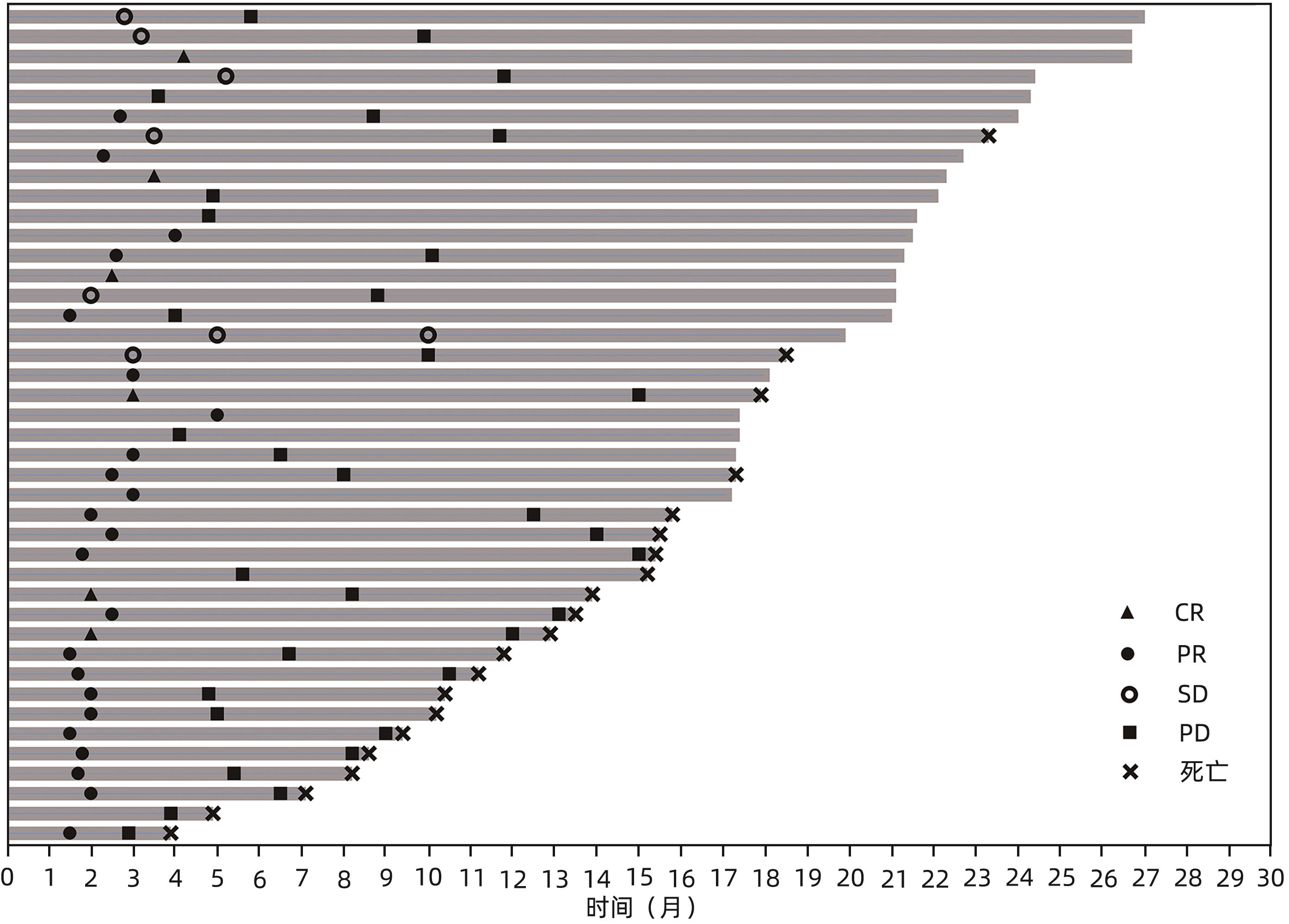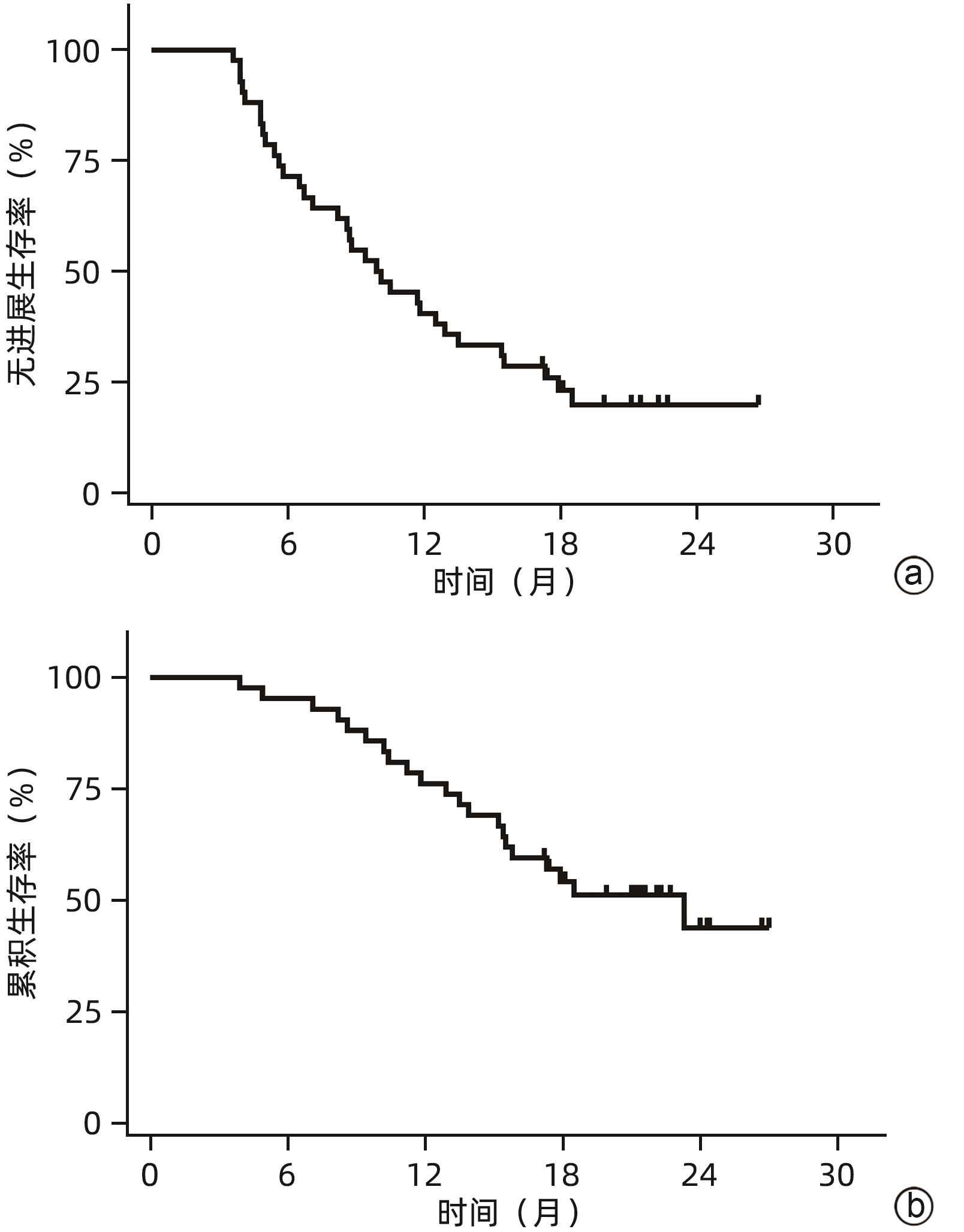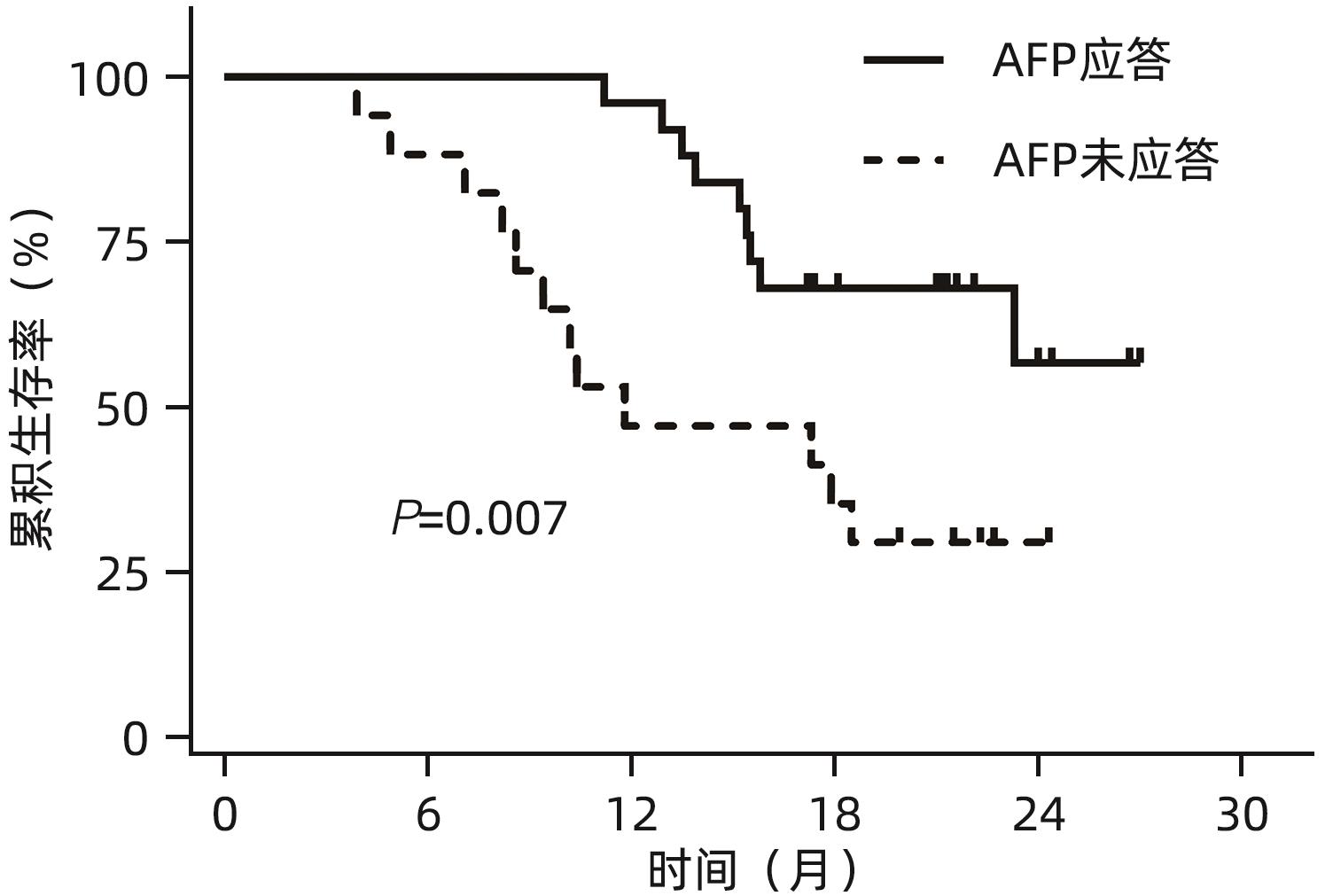HBV感染与线粒体稳态相互作用的分子机制
DOI: 10.12449/JCH250222
Molecular mechanisms of the interaction between hepatitis B virus infection and mitochondrial homeostasis
-
摘要: HBV感染可造成急性或慢性感染,未经治疗的患者可发展为肝硬化、肝癌而死亡。线粒体作为重要的细胞器之一,其正常形态和功能的维持是保证细胞进行各种生理活动的主要基础,线粒体动力学、线粒体自噬、损伤、氧化磷酸化等生理活动均可影响线粒体稳态的维持。HBV感染可影响线粒体稳态,本文从线粒体动力学、线粒体自噬、线粒体氧化磷酸化及线粒体损伤4个方面总结线粒体稳态与HBV感染的研究进展,深入探讨线粒体稳态的维持与HBV感染的关系,以期为理解HBV感染的分子机制,甚至寻找HBV潜在治疗靶点提供一定的理论依据。Abstract: Hepatitis B virus (HBV) infection can cause acute or chronic infection, while untreated patients can develop into liver cirrhosis or liver cancer, thereby leading to death. As one of the most important organelles of cells, the maintenance of the normal morphology and function of mitochondria is the basis for ensuring various physiological activities in cells, and physiological activities, such as mitochondrial dynamics, mitophagy, injury, and oxidative phosphorylation, can affect the maintenance of mitochondrial homeostasis. HBV infection can affect mitochondrial homeostasis. This article summarizes the research advances in mitochondrial homeostasis and HBV infection from the four aspects of mitochondrial dynamics, mitophagy, mitochondrial oxidative phosphorylation, and mitochondrial injury and discusses the association between the maintenance of mitochondrial homeostasis and HBV infection, in order to provide a theoretical basis for understanding the molecular mechanism of HBV infection and identifying the potential therapeutic targets for HBV.
-
Key words:
- Hepatitis B Virus /
- Mitochondria /
- Mitochondrial Dynamics /
- Mitophagy /
- Oxidative Phosphorylation
-
大多数肝癌患者起病隐匿,诊断时已为晚期,失去根治性治疗机会,预后较差[1]。在全球Ⅲ期临床试验IMbrave 150中,阿替利珠单抗联合贝伐珠单抗(T+A方案)在不可切除肝细胞癌患者的一线治疗中的总生存期(overall survival,OS)和无进展生存期(progression-free survival,PFS)优于索拉非尼[2]。同样,在中国进行的多中心研究ORIENT-32表明,在不可切除的原发性肝癌患者中,信迪利单抗联合贝伐珠单抗类似物(双达方案)作为一线治疗的OS和PFS也显著优于索拉非尼[3]。基于上述研究,免疫检查点抑制剂联合抗血管生成治疗已成为不可切除肝癌的一线治疗标准,但客观缓解率仅有30%左右,远期生存率也有待提高[4-5]。
局部治疗对于控制病灶及改善长期生存均有较好疗效,目前立体定向放疗(stereotactic body radiotherapy,SBRT)已成为肝癌局部治疗的有效手段之一,与靶免方案的联合治疗也取得较好效果[6-7]。从机制上来看,放疗不仅可以造成肿瘤细胞DNA的直接损伤,还能导致肿瘤抗原释放,激活机体主动免疫,从而增强肿瘤免疫治疗效果[8]。抗血管生成治疗可以使肿瘤血管系统正常化,改善肿瘤微环境,从而提高放疗效果[9]。因此,SBRT联合双达方案的三联治疗从理论上可以改善不可切除肝癌患者的预后,但相关治疗效果、不良反应以及疗效预测指标鲜有报道。
本研究回顾性分析接受SBRT联合双达方案治疗的不可切除肝癌患者资料,评估预后及不良反应,探索预后预测指标,为该方案的治疗管理提供参考。
1. 资料和方法
1.1 研究对象
纳入2022年3月—12月在本中心放射治疗科接受SBRT联合双达方案治疗的不可切除肝癌患者42例。纳入标准:(1)经病理组织学确诊或符合临床诊断标准的原发性肝癌患者;(2)巴塞罗那分期为B或C期;(3)ECOG评分为0或1分;(4)治疗前基线AFP>40 mAU/mL;(5)根据改良实体瘤评价标准,至少有1处肝内可测量病灶。排除标准:(1)既往进行过抗肿瘤治疗;(2)双达方案治疗小于2个周期;(3)合并其他恶性肿瘤;(4)治疗后影像学或实验室数据缺失。
1.2 治疗方案
1.2.1 SBRT
本科室采用SBRT设备射波刀(美国Accuracy公司的VSI Cyberknife)。所有患者治疗前在CT引导下植入金标3~5枚,5~7天后于CT模拟机(somatom40排CT,德国Siemens公司)下行放疗定位。以CT模拟机平扫影像为基准图像,MR(Philips Ingenia MR-RT 3.0T,瑞士Royal Dutch Philips Electronics Ltd公司)增强影像为辅助图像,定位完成后将图像传至TPS系统(MultiPlan4.0系统,美国Accuracy公司)。放疗专科医生勾画相应肿瘤靶区和危及器官。大体肿瘤靶区基础上外扩3~5 mm为计划靶区,根据正常器官限量制定治疗计划,参照《AAPM TG101报告》[10]。SBRT剂量及分割模式主要取决于肝功能和正常器官剂量限制,也与病灶的大小、数量和位置等有关。给予处方剂量为36~50 Gy,分5~6次,连续照射。
1.2.2 双达方案
患者在完成放疗1周后接受信迪利单抗联合贝伐珠单抗治疗,具体剂量为:信迪利单抗200 mg,静脉滴注,每3周1次;贝伐珠单抗10 mg/kg,静脉滴注,每3周1次。双达方案一直使用到出现疾病进展或无法耐受的严重不良反应。
1.3 随访和评估
首次随访时间为治疗后6~8周,此后每6~8周随访1次。随访时检查血常规、肝功能、凝血功能、血清肿瘤标志物、上腹部增强CT或磁共振成像以及肺部CT,以评估肿瘤缓解。必要时进行PET-CT检查以确认是否肝外转移。主要终点为OS[定义为从SBRT开始日期至全因死亡日期或末次随访日期(2024年5月30日)的时间]以及PFS[定义为从SBRT开始日期至首次检测到影像学进展或全因死亡日期的时间]。次要终点为客观缓解率(objective response rate,ORR)和疾病控制率(disease control rate,DCR),根据mRECIST标准将肿瘤缓解分为完全缓解(complete remission,CR)、部分缓解(partial response,PR)、疾病稳定(stable disease,SD)和疾病进展(progressive disease,PD),并由2名经验丰富的放射科医生独立评价。ORR定义为获得CR+PR患者的百分比,DCR定义为获得CR+PR+SD患者的百分比。AFP应答定义为治疗后6~8周AFP下降大于50%。根据不良事件通用术语标准5.0版评估不良事件。
1.4 统计学方法
所有数据的统计分析使用SPSS 26.0或Graphpad Prism进行。通过Kaplan-Meier法和Log-rank检验估计生存率并进行比较;使用Cox比例风险模型估计HR和95%CI,在单变量模型中P<0.1的变量纳入多变量分析。P<0.05为差异有统计学意义。
2. 结果
2.1 一般资料
42例接受SBRT联合双达方案治疗的晚期肝癌患者中男39例,占比92.8%。>50岁的患者31例(73.8%),既往存在HBV感染41例(97.6%),肿瘤病灶最大径>5 cm有28例(66.6%),存在门静脉癌栓(portal vein tumor thrombus,PVTT)36例(85.8%),发生肝外转移8例(19.1%),提示入组患者肿瘤负荷相对较重。入组患者治疗前AFP均升高,中位值为626.5 ng/mL(表1)。42例患者均为初治,既往未行抗肿瘤治疗,此次接受SBRT剂量中位值为45 Gy,具体放疗剂量分割方案如下:36 Gy/6 Fx的患者有2例(4.7%),48 Gy/6 Fx有8例(19%),40 Gy/5 Fx有2例(4.7%),45 Gy/5 Fx有23例(54.7%),50 Gy/5 Fx有7例(16.6%)。
表 1 42例患者基线临床资料Table 1. The characteristics of 42 patients指标 数值 年龄[例(%)] ≤50岁 11(26.2) >50岁 31(73.8) 性别[例(%)] 男 39(92.8) 女 3(7.2) 慢性肝疾病[例(%)] 乙型肝炎 41(97.6) 其他 1(2.4) PVTT[例(%)] 有 36(85.8) 无 6(14.2) 肿瘤最大径[例(%)] ≤5 cm 14(33.4) >5 cm 28(66.6) 肝外转移[例(%)] 有 8(19.1) 无 34(80.9) ECOG评分[例(%)] 0分 35(83.3) 1分 7(16.7) Child-Pugh分级[例(%)] A级 26(61.9) B级 16(38.1) ALBI分级[例(%)] 1级 8(19.1) 2级 34(80.9) BCLC分期[例(%)] B期 1(2.3) C期 41(97.7) AFP(ng/mL) 626.5(83.1~4 105.0) 放疗剂量(Gy) 45(45~48) 2.2 肿瘤控制及远期生存情况
随访至2024年5月30日,共有21例患者死亡,其中8例因肝衰竭死亡,7例因肿瘤进展死亡,4例因继发感染死亡,2例因消化道出血死亡。在肿瘤局部控制方面,治疗后6例患者(14.3%)达到CR,23例患者(54.7%)达到PR,7例患者(16.7%)为SD,6例患者(14.3%)为PD,全组患者ORR为69%,DCR为85.7%(图1)。中位随访时间为21.6个月(95%CI:20.4~22.8),中位PFS为10.0个月(95%CI:6.7~13.0)(图2a),中位OS为23.3个月(95%CI:14.7~31.8)(图2b)。
2.3 影响预后的因素
影响患者预后的单因素分析见表2,治疗后6~8周出现AFP应答的患者有25例,多因素分析结果显示AFP应答与患者良好的预后相关(HR=0.31,95%CI:0.13~0.75,P=0.009);AFP应答组中位OS显著优于AFP未应答组(未达到 vs 11.8个月,P=0.007)(图3)。
表 2 影响OS的单因素分析Table 2. Univariate analysis for factors affecting OS临床特征 HR(95%CI) P值 年龄(≤50岁/>50岁) 0.33(0.10~1.13) 0.077 性别(女/男) 0.74(0.10~5.50) 0.764 门静脉侵犯(无/有) 0.24(0.03~1.79) 0.163 肿瘤大小(≤5 cm/>5 cm) 1.25(0.52~3.01) 0.617 肝外转移(有/无) 1.03(0.35~3.08) 0.953 Child-Pugh分级(A级/B级) 0.53(0.22~1.24) 0.144 ALBI分级(1级/2级) 0.88(0.30~2.62) 0.818 AFP应答(是/否) 0.32(0.14~0.78) 0.011 门静脉侵犯(无/有) 1.11(0.61~2.03) 0.725 用药周期 0.96(0.91~1.01) 0.086 放疗剂量(Gy) 0.99(0.88~1.12) 0.912 ECOG评分(1分/0分) 0.75(0.25~2.26) 0.614 2.4 不良反应
42例患者均未发生非预期不良反应或治疗相关死亡,不良反应多为1~2级,其中血液系统不良反应较常见,发生白细胞减少10例(23.8%),血小板减少8例(19.0%),1例患者出现3级血小板减少,给予重组人血小板生成素后血小板恢复正常水平。10例患者(23.8%)出现转氨酶升高,给予保肝药物对症治疗,未进一步恶化。10例患者出现低蛋白血症,放疗结束1月内可缓解。3例患者出现免疫相关性甲状腺功能减退,4例患者发生免疫相关性皮疹,均为1~2级,未使用激素及免疫抑制剂等药物干预,持续时间4~10天,未影响后续治疗(表3)。
表 3 治疗相关不良反应Table 3. Treatment-related adverse events不良反应 所有级别[例(%)] 3~4级[例(%)] 白细胞减少 10(23.8) 0(0.0) 血小板减少 8(19.0) 1(2.4) 高血压 2(4.8) 0(0.0) 恶心呕吐 3(7.1) 0(0.0) 消化道出血 1(2.4) 0(0.0) 蛋白尿 3(7.1) 0(0.0) 腹水 9(21.4) 1(2.4) 转氨酶升高 10(23.8) 0(0.0) 肾功能不全 1(2.4) 0(0.0) 高胆红素 4(9.5) 0(0.0) 低蛋白血症 10(23.8) 1(2.4) 免疫相关性甲状腺功能减退 3(7.1) 0(0.0) 免疫相关性皮疹 4(9.5) 0(0.0) 3. 讨论
在目前的临床诊疗中,免疫联合抗血管生成治疗已成为晚期肝细胞癌的一线标准方案,但ORR仅有30%左右,亟待提高[11-12]。随着放疗技术的进展,放疗不仅可导致肿瘤细胞DNA双链断裂,还能诱导免疫原性细胞死亡,刺激全身抗肿瘤免疫[13]。抗血管生成治疗可通过使肿瘤血管正常化,形成免疫友好的肿瘤微环境来增强放疗的功效[9]。此外,免疫治疗可以克服放疗导致肿瘤表面PD-L1表达增加、抑制性免疫细胞功能增强等负面作用,从而增强放疗的协同效率[14]。这为放疗联合免疫及抗血管生成治疗提供了坚实的理论依据。
既往回顾性研究分析了放疗联合靶免的治疗方案,Su等[15]研究发现,PD-1抑制剂与抗血管药物联合调强放疗的ORR为42.6%,Wang等[6]报道的SBRT联合仑伐替尼和PD-1抑制剂的ORR可达到63%。一项前瞻性多中心Ⅱ期临床研究显示,放疗联合双达方案的ORR为58.7%,中位PFS为13.8个月,中位OS为24.0个月[16]。与上述前瞻性研究不同,本研究放疗在双达方案之前,患者ORR为69%,与单独双达方案以及上述前瞻性研究相比均有提升,中位OS与前瞻性研究结果相当。在双达方案之前进行SBRT或许具有协同效应,可获得较好的局部缓解及生存结局,本研究为该三联疗法的可行性和安全性提供了临床证据。
本研究入组患者中有36例(85.8%)存在PVTT,通常与不良预后相关[17]。但由于PVTT细胞对辐射的敏感性较高,SBRT已被证明在控制PVTT方面疗效显著[18]。一方面,放疗使癌栓收缩有助于恢复部分门静脉血流,可改善肝功能;另一方面,PVTT的控制能消除部分侵入血流的肿瘤细胞,进而减少了血行转移,产生较好的肿瘤反应和生存结局[19]。除此之外,在双达方案之前使用SBRT可以有效降低肝脏肿瘤负荷,改善肝功能,提高患者对后续治疗的耐受性,从而接受更多周期的双达方案维持治疗,这可能是本组患者预后良好的原因之一。
在预后指标的探索方面,AFP是一种与肿瘤负荷和生物学行为相关的生物标志物,数十年来在肝癌领域发挥着重要作用[20]。当前指南推荐AFP与超声联合,用于肝癌高危人群的早期筛查[21]。此外,AFP易于在随访期间重复检测,可评估其动态变化来监测治疗效果[22]。目前关于AFP应答的临界值尚无定论,国内外研究多为主观定义。一项Meta分析显示,AFP应答的定义为AFP水平下降20%或50%所占比例居多,且该研究提示与AFP水平下降50%的临界值相比,AFP水平下降20%对OS和PFS的预测效果更好,但倾向于仅接受靶向治疗的患者[23]。Shao等[24]将早期AFP应答定义为治疗后4周下降超过20%,这与晚期肝癌免疫治疗较好的预后有关。另一项研究表明在接受T+A方案治疗的晚期肝癌患者中,治疗第6周时AFP较基线降低≥75%或升高≤10%的患者均具有较长的PFS及OS[25]。本研究参考入组患者AFP水平下降比例的中位值,将SBRT联合双达治疗后6~8周AFP水平下降>50%定义为AFP应答,多因素分析提示AFP应答是患者OS的独立影响因素。AFP应答可辅助影像学评估,有助于更好地识别该三联疗法中疗效显著的患者,并对疗效不佳患者及时调整治疗方案。但是,对于不同AFP初始值的肝癌患者,AFP应答的预测价值是否一致仍未知,且关于判断AFP应答的最佳时间窗目前亦无定论。在未来的探索中,需要更多高质量的前瞻性研究对AFP给予更多关注。
本研究也证实了SBRT联合双达方案治疗的安全性,双达方案治疗最常见的不良反应为蛋白尿、血小板减少、转氨酶升高、高血压和甲状腺功能减退等[3],与本研究不良反应相似,治疗期间未发生导致停药或死亡的不良事件。本研究中所采用的射波刀特有的呼吸追踪系统有效降低了照射过程中肝脏位移带来的肝损伤。另一方面以肿瘤为中心,剂量梯度衰减也使得周围组织所受照射剂量更低。总之,不良反应主要集中在1~2级,SBRT与双达方案联合产生协同毒性的可能性较小。
综上所述,SBRT联合双达方案治疗晚期肝癌可改善生存且安全性可控,治疗后6~8周AFP水平下降>50%与预后良好相关。但本研究为回顾性研究,样本量相对较少,未来仍需开展前瞻性的随机、对照、多中心临床研究,进一步验证结论。
-
注: ATP,三磷酸腺苷;Drp1,GTP酶动力蛋白相关蛋白1;HBx,HBV X蛋白;GDP,鸟嘌呤二核苷酸磷酸;MAVS,线粒体抗病毒信号蛋白;Mfn,线粒体融合蛋白;MOTS-c,线粒体12S rRNA开放阅读框;MYH9,肌球蛋白-9;OPA1,视神经萎缩1蛋白;ROS,活性氧;SOCS3,细胞因子信号传导3抑制因子;STAT3,信号转导及转录激活因子3;TRIM28,E3泛素连接酶三基序蛋白28。
图 1 HBV感染与线粒体稳态相互作用的分子机制
Figure 1. The molecular mechanisms of the interaction between hepatitis B virus infection and mitochondrial homeostasis.
-
[1] REVILL PA, CHISARI FV, BLOCK JM, et al. A global scientific strategy to cure hepatitis B[J]. Lancet Gastroenterol Hepatol, 2019, 4( 7): 545- 558. DOI: 10.1016/S2468-1253(19)30119-0. [2] SCHWEITZER A, HORN J, MIKOLAJCZYK RT, et al. Estimations of worldwide prevalence of chronic hepatitis B virus infection: A systematic review of data published between 1965 and 2013[J]. Lancet, 2015, 386( 10003): 1546- 1555. DOI: 10.1016/S0140-6736(15)61412-X. [3] TSAI WL, CHUNG RT. Viral hepatocarcinogenesis[J]. Oncogene, 2010, 29( 16): 2309- 2324. DOI: 10.1038/onc.2010.36. [4] LIN CR, LUO LJ, XUN Z, et al. Novel function of MOTS-c in mitochondrial remodelling contributes to its antiviral role during HBV infection[J]. Gut, 2024, 73( 2): 338- 349. DOI: 10.1136/gutjnl-2023-330389. [5] WASHIZAKI A, MURAYAMA A, MURATA M, et al. Neutralization of hepatitis B virus with vaccine-escape mutations by hepatitis B vaccine with large-HBs antigen[J]. Nat Commun, 2022, 13( 1): 5207. DOI: 10.1038/s41467-022-32910-z. [6] KIM H, LEE SA, KIM BJ. X region mutations of hepatitis B virus related to clinical severity[J]. World J Gastroenterol, 2016, 22( 24): 5467- 5478. DOI: 10.3748/wjg.v22.i24.5467. [7] LI WH, URBAN S. Entry of hepatitis B and hepatitis D virus into hepatocytes: Basic insights and clinical implications[J]. J Hepatol, 2016, 64( 1): S32- S40. DOI: 10.1016/j.jhep.2016.02.011. [8] KOSHIBA T, DETMER SA, KAISER JT, et al. Structural basis of mitochondrial tethering by mitofusin complexes[J]. Science, 2004, 305( 5685): 858- 862. DOI: 10.1126/science.1099793. [9] CAO YL, MENG SX, CHEN Y, et al. MFN1 structures reveal nucleotide-triggered dimerization critical for mitochondrial fusion[J]. Nature, 2017, 542( 7641): 372- 376. DOI: 10.1038/nature21077. [10] CHAN DC. Mitochondria: Dynamic organelles in disease, aging, and development[J]. Cell, 2006, 125( 7): 1241- 1252. DOI: 10.1016/j.cell.2006.06.010. [11] MATTIE S, RIEMER J, WIDEMAN JG, et al. A new mitofusin topology places the redox-regulated C terminus in the mitochondrial intermembrane space[J]. J Cell Biol, 2018, 217( 2): 507- 515. DOI: 10.1083/jcb.201611194. [12] LOSÓN OC, SONG ZY, CHEN H, et al. Fis1, Mff, MiD49, and MiD51 mediate Drp1 recruitment in mitochondrial fission[J]. Mol Biol Cell, 2013, 24( 5): 659- 667. DOI: 10.1091/mbc.E12-10-0721. [13] INGERMAN E, PERKINS EM, MARINO M, et al. Dnm1 forms spirals that are structurally tailored to fit mitochondria[J]. J Cell Biol, 2005, 170( 7): 1021- 1027. DOI: 10.1083/jcb.200506078. [14] JI WK, HATCH AL, MERRILL RA, et al. Actin filaments target the oligomeric maturation of the dynamin GTPase Drp1 to mitochondrial fission sites[J]. Elife, 2015, 4: e11553. DOI: 10.7554/eLife.11553. [15] GUDIMCHUK NB, MCINTOSH JR. Regulation of microtubule dynamics, mechanics and function through the growing tip[J]. Nat Rev Mol Cell Biol, 2021, 22( 12): 777- 795. DOI: 10.1038/s41580-021-00399-x. [16] OJAIMI M AL, SALAH A, EL-HATTAB AW. Mitochondrial fission and fusion: Molecular mechanisms, biological functions, and related disorders[J]. Membranes(Basel), 2022, 12( 9): 893. DOI: 10.3390/membranes12090893. [17] CUYÀS E, VERDURA S, MARTIN-CASTILLO B, et al. Circulating levels of MOTS-c in patients with breast cancer treated with metformin[J]. Aging(Albany NY), 2022, 15( 4): 892- 897. DOI: 10.18632/aging.204423. [18] KIM SJ, KHAN M, QUAN J, et al. Hepatitis B virus disrupts mitochondrial dynamics: Induces fission and mitophagy to attenuate apoptosis[J]. PLoS Pathog, 2013, 9( 12): e1003722. DOI: 10.1371/journal.ppat.1003722. [19] XIANG L, SHAO YR, CHEN YP. Mitochondrial dysfunction and mito-chondrion-targeted therapeutics in liver diseases[J]. J Drug Target, 2021, 29( 10): 1080- 1093. DOI: 10.1080/1061186X.2021.1909051. [20] SCHOLLMEIER A, BASIC M, GLITSCHER M, et al. The impact of HBx protein on mitochondrial dynamics and associated signaling pathways strongly depends on the hepatitis B virus genotype[J]. J Virol, 2024, 98( 5): e0042424. DOI: 10.1128/jvi.00424-24. [21] SOROURI M, CHANG T, HANCKS DC. Mitochondria and viral infection: Advances and emerging battlefronts[J]. mBio, 2022, 13( 1): e0209621. DOI: 10.1128/mbio.02096-21. [22] SIVASUDHAN E, BLAKE N, LU ZL, et al. Hepatitis B viral protein HBx and the molecular mechanisms modulating the hallmarks of hepatocellular carcinoma: A comprehensive review[J]. Cells, 2022, 11( 4): 741. DOI: 10.3390/cells11040741. [23] LU YY, LI ZJ, ZHANG SQ, et al. Cellular mitophagy: Mechanism, roles in diseases and small molecule pharmacological regulation[J]. Theranostics, 2023, 13( 2): 736- 766. DOI: 10.7150/thno.79876. [24] MATSUDA N, SATO S, SHIBA K, et al. PINK1 stabilized by mitochondrial depolarization recruits Parkin to damaged mitochondria and activates latent Parkin for mitophagy[J]. J Cell Biol, 2010, 189( 2): 211- 221. DOI: 10.1083/jcb.200910140. [25] PARK S, CHOI SG, YOO SM, et al. Pyruvate stimulates mitophagy via PINK1 stabilization[J]. Cell Signal, 2015, 27( 9): 1824- 1830. DOI: 10.1016/j.cellsig.2015.05.020. [26] NGUYEN TN, PADMAN BS, LAZAROU M. Deciphering the molecular signals of PINK1/parkin mitophagy[J]. Trends Cell Biol, 2016, 26( 10): 733- 744. DOI: 10.1016/j.tcb.2016.05.008. [27] RICHTER B, SLITER DA, HERHAUS L, et al. Phosphorylation of OPTN by TBK1 enhances its binding to Ub chains and promotes selective autophagy of damaged mitochondria[J]. Proc Natl Acad Sci USA, 2016, 113( 15): 4039- 4044. DOI: 10.1073/pnas.1523926113. [28] MOORE AS, HOLZBAUR ELF. Dynamic recruitment and activation of ALS-associated TBK1 with its target optineurin are required for efficient mitophagy[J]. Proc Natl Acad Sci USA, 2016, 113( 24): E3349- E3358. DOI: 10.1073/pnas.1523810113. [29] LAZAROU M, SLITER DA, KANE LA, et al. The ubiquitin kinase PINK1 recruits autophagy receptors to induce mitophagy[J]. Nature, 2015, 524( 7565): 309- 314. DOI: 10.1038/nature14893. [30] LI J, YANG DM, LI ZP, et al. PINK1/Parkin-mediated mitophagy in neurodegenerative diseases[J]. Ageing Res Rev, 2023, 84: 101817. DOI: 10.1016/j.arr.2022.101817. [31] SZARGEL R, SHANI V, ELGHANI F ABD, et al. The PINK1, synphilin-1 and SIAH-1 complex constitutes a novel mitophagy pathway[J]. Hum Mol Genet, 2016, 25( 16): 3476- 3490. DOI: 10.1093/hmg/ddw189. [32] PARK S, CHOI SG, YOO SM, et al. Choline dehydrogenase interacts with SQSTM1/p62 to recruit LC3 and stimulate mitophagy[J]. Autophagy, 2014, 10( 11): 1906- 1920. DOI: 10.4161/auto.32177. [33] WONG YC, YSSELSTEIN D, KRAINC D. Mitochondria-lysosome contacts regulate mitochondrial fission via RAB7 GTP hydrolysis[J]. Nature, 2018, 554( 7692): 382- 386. DOI: 10.1038/nature25486. [34] CHENG J, WEI L, LI M. Progress in regulation of mitochondrial dynamics and mitochondrial autophagy[J]. Acta Physiologica Sinica, 2020, 72( 4): 475- 487. DOI: 10.13294/j.aps.2020.0025.程婧, 魏林, 李苗. 线粒体动力学及线粒体自噬调控机制的研究进展[J]. 生理学报, 2020, 72( 4): 475- 487. DOI: 10.13294/j.aps.2020.0025. [35] YAN CJ, GONG LL, CHEN L, et al. PHB2(prohibitin 2) promotes PINK1-PRKN/Parkin-dependent mitophagy by the PARL-PGAM5-PINK1 axis[J]. Autophagy, 2020, 16( 3): 419- 434. DOI: 10.1080/15548627.2019.1628520. [36] GILKERSON R, KAUR H, CARRILLO O, et al. OMA1-mediated mitochondrial dynamics balance organellar homeostasis upstream of cellular stress responses[J]. Int J Mol Sci, 2024, 25( 8): 4566. DOI: 10.3390/ijms25084566. [37] LIU BH, XU CZ, LIU Y, et al. Mitochondrial quality control in human health and disease[J]. Mil Med Res, 2024, 11( 1): 32. DOI: 10.1186/s40779-024-00536-5. [38] CHEN YY, WANG WH, CHE L, et al. BNIP3L-dependent mitophagy promotes HBx-induced cancer stemness of hepatocellular carcinoma cells via glycolysis metabolism reprogramming[J]. Cancers(Basel), 2020, 12( 3): 655. DOI: 10.3390/cancers12030655. [39] KARBOWSKI M, OSHIMA Y, VERHOEVEN N. Mitochondrial proteotoxicity: Implications and ubiquitin-dependent quality control mechanisms[J]. Cell Mol Life Sci, 2022, 79( 11): 574. DOI: 10.1007/s00018-022-04604-8. [40] YOO YS, PARK YJ, LEE HS, et al. Mitochondria ubiquitin ligase, MARCH5 resolves hepatitis B virus X protein aggregates in the liver pathogenesis[J]. Cell Death Dis, 2019, 10( 12): 938. DOI: 10.1038/s41419-019-2175-z. [41] LIU LJ, LV Z, XUE X, et al. Canonical WNT signaling activated by WNT7B contributes to L-HBs-mediated sorafenib resistance in hepatocellular carcinoma by inhibiting mitophagy[J]. Cancers(Basel), 2022, 14( 23): 5781. DOI: 10.3390/cancers14235781. [42] WING PAC, LIU PJ, HARRIS JM, et al. Hypoxia inducible factors regulate hepatitis B virus replication by activating the basal core promoter[J]. J Hepatol, 2021, 75( 1): 64- 73. DOI: 10.1016/j.jhep.2020.12.034. [43] LIU CY, ZHAO KT, CHEN YS, et al. Mitochondrial glycerol-3-phosphate dehydrogenase restricts HBV replication via the TRIM28-mediated degradation of HBx[J]. J Virol, 2023, 97( 5): e0058023. DOI: 10.1128/jvi.00580-23. [44] SCHMIDT NM, WING PAC, DINIZ MO, et al. Targeting human acyl-CoA: Cholesterol acyltransferase as a dual viral and tcell metabolic checkpoint[J]. Nat Commun, 2021, 12: 2814. DOI: 10.1038/s41467-021-22967-7. [45] LIU Y, XU RY, GU HY, et al. Metabolic reprogramming in macrophage responses[J]. Biomark Res, 2021, 9( 1): 1. DOI: 10.1186/s40364-020-00251-y. [46] LI YM, ZHU YW, FENG S, et al. Macrophages activated by hepatitis B virus have distinct metabolic profiles and suppress the virus via IL-1β to downregulate PPARα and FOXO3[J]. Cell Rep, 2022, 38( 4): 110284. DOI: 10.1016/j.celrep.2021.110284. [47] SUOMALAINEN A, BATTERSBY BJ. Mitochondrial diseases: The contribution of organelle stress responses to pathology[J]. Nat Rev Mol Cell Biol, 2018, 19( 2): 77- 92. DOI: 10.1038/nrm.2017.66. [48] YUAN K, LEI Y, CHEN HN, et al. HBV-induced ROS accumulation promotes hepatocarcinogenesis through Snail-mediated epigenetic silencing of SOCS3[J]. Cell Death Differ, 2016, 23( 4): 616- 627. DOI: 10.1038/cdd.2015.129. [49] CHEN P, YAO LC, YUAN MQ, et al. Mitochondrial dysfunction: A promising therapeutic target for liver diseases[J]. Genes Dis, 2023, 11( 3): 101115. DOI: 10.1016/j.gendis.2023.101115. [50] JABEEN K, JAVED A, MANZOOR S, et al. Antioxidants and calcium modulators preclude in vitro hepatitis B virus-induced mitochondrial damage[J]. Turk J Gastroenterol, 2023, 34( 10): 1052- 1061. DOI: 10.5152/tjg.2023.21290. [51] LIN N, YIN W, MILLER H, et al. The role of regulatory T cells and follicular T helper cells in HBV infection[J]. Front Immunol, 2023, 14: 1169601. DOI: 10.3389/fimmu.2023.1169601. [52] YANG J, ZHENG LY, YANG ZG, et al. 5-FU promotes HBV replication through oxidative stress-induced autophagy dysfunction[J]. Free Radic Biol Med, 2024, 213: 233- 247. DOI: 10.1016/j.freeradbiomed.2024.01.011. [53] YOON H, LEE HK, JANG KL. Hydrogen peroxide inhibits hepatitis B virus replication by downregulating HBx levels via siah-1-mediated proteasomal degradation in human hepatoma cells[J]. Int J Mol Sci, 2023, 24( 17): 13354. DOI: 10.3390/ijms241713354. [54] FENG MX, YU YN, CHEN YQ, et al. HBx-induced PLA2R overexpression mediates podocyte pyroptosis through the ROS-NLRP3 signaling pathway[J]. Ren Fail, 2023, 45( 1): 2170808. DOI: 10.1080/0886022X.2023.2170808. [55] ZHAN X, WU R, KONG XH, et al. Elevated neutrophil extracellular traps by HBV-mediated S100A9-TLR4/RAGE-ROS cascade facilitate the growth and metastasis of hepatocellular carcinoma[J]. Cancer Commun(Lond), 2023, 43( 2): 225- 245. DOI: 10.1002/cac2.12388. -




 PDF下载 ( 856 KB)
PDF下载 ( 856 KB)

 下载:
下载:




 下载:
下载:





